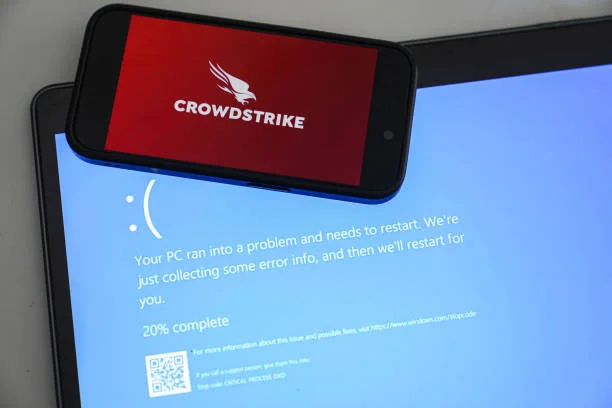
On a seemingly ordinary Friday morning, July 19th, millions of Windows machines went offline in a global outage triggered by a faulty CrowdStrike update. What began as isolated reports of Blue Screen of Death (BSOD) errors across the globe rapidly escalated into a full-blown tech crisis. From bustling Australian shopping centers to critical infrastructure in the UK, India, and beyond, millions of Windows machines were crippled. The culprit? A faulty update from cybersecurity giant CrowdStrike.
Read More interesting articles on trendystring.com
How Did It Happen?
At the heart of this disaster was CrowdStrike’s Falcon security software. Unlike most applications that operate at the user mode level, Falcon resides in the kernel, the operating system’s core. This privileged position grants it unparalleled access to system resources, enabling robust threat detection. However, it also amplifies the potential for catastrophic failure.
A minor, 40KB update, intended to bolster defenses, instead introduced a fatal flaw. The update corrupted the software’s memory management, triggering a chain reaction that brought systems to their knees. Within a mere 78 minutes of the initial deployment, CrowdStrike released a patch, but the damage was done. Airlines grounded flights, hospitals faced operational challenges, and countless businesses suffered significant disruptions.
Key Players in the Drama
- CrowdStrike: The cybersecurity firm responsible for the faulty update.
- Troy Hunt: Australian cybersecurity expert who early on recognized the unusual nature of the event.
- Patrick Wardle: CEO of DoubleYou and founder of the Objective-See Foundation, who provided expert analysis of the incident.
- Microsoft: The software giant whose operating system was at the mercy of the faulty driver.
- McAfee and Symantec: Antivirus companies that opposed Microsoft’s initial attempts to restrict kernel access.
Preventing Future Disasters
The question now is: How can we prevent a recurrence? While CrowdStrike bears primary responsibility, the incident exposed systemic vulnerabilities. Microsoft holds the key to significant improvements.
One potential solution involves enhancing Windows’ ability to handle faulty drivers. By implementing more intelligent logic, the operating system could potentially bypass problematic drivers and prevent system crashes. A more radical approach would be to restrict kernel access to third-party drivers altogether. This would significantly reduce the risk of catastrophic failures but would also face opposition from the cybersecurity industry.
Microsoft’s history with this issue is complex. Its previous attempt to limit kernel access, PatchGuard, was met with fierce resistance from security vendors. The company eventually relented, fearing antitrust implications. However, the recent outage has reignited the debate.
The Road Ahead
As investigations continue, it’s clear that this incident was a wake-up call for the tech industry. The interdependence of software and hardware, coupled with the increasing complexity of systems, creates a fertile ground for unforeseen consequences. A collaborative effort between software developers, hardware manufacturers, and regulatory bodies is essential to build a more resilient digital ecosystem.